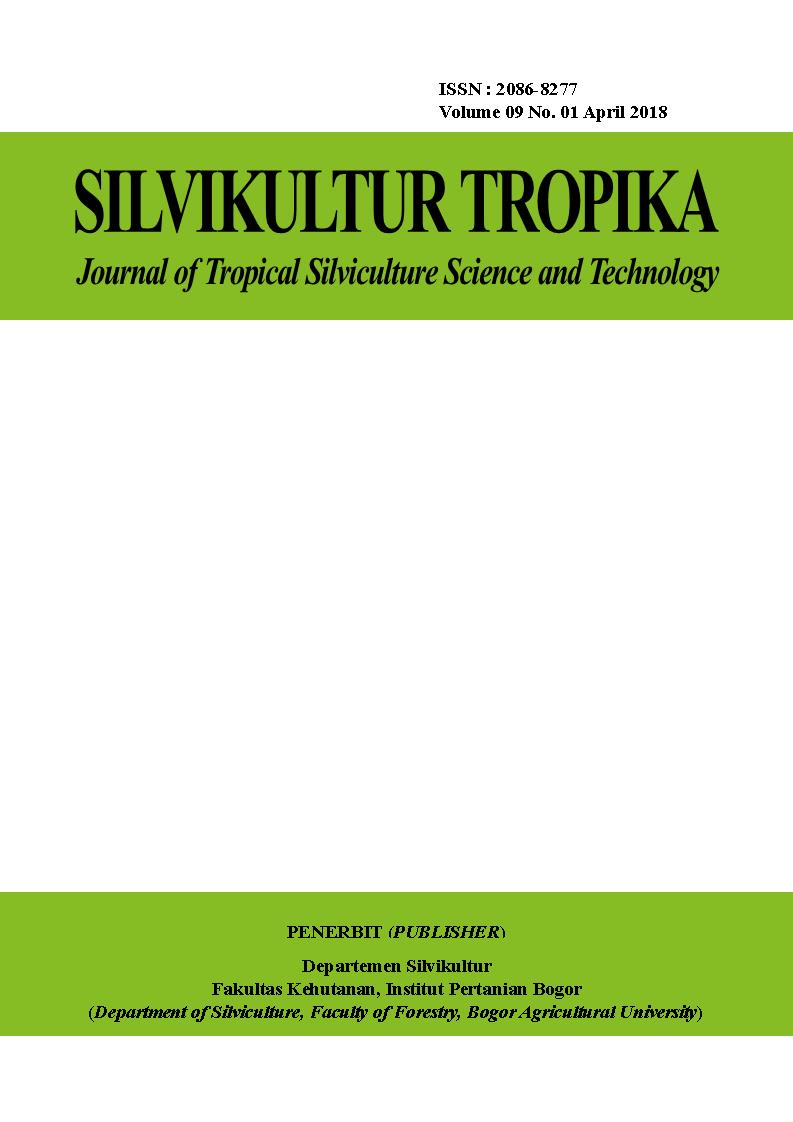HAMA MANGROVE DI KECAMATAN BATU AMPAR, KABUPATEN KUBU RAYA, KALIMANTAN BARAT Mangrove Pests at Batu Ampar, Kubu Raya, West Kalimantan
Abstract
Mangrove ecosystem is a complex tropical forest ecosystem that is able to live and to adapt in coastal environments.
Unfortunatelly, its existence is vulnerable to the environmental change. Unless utilization of mangrove forest is not
followed by enrichment and rehabilitation, it will lead to degradation of logged-over land such as pest and disease
infestation. The pest study was conducted in mangrove stands in PT. Bina Ovivipari Semesta (BIOS), Kubu Raya, West
Kalimantan. The result of study consisted of three sample plots obtained from the average of mangrove pest on the
cutting area of 2017 (93.33%), attack intensity (28%). Additionally, the average of cutting area of 2012 were at 91.95%
and attack intensity (29%) while the protection forest obtained the average of attack at 79.23% and attack intensity
(21.87%). The results of pest identification of mangrove arboretum were 9 pests, including pagoda bagworm (Pagodiella
spp.), bagworm (Acanthopsyche sp.), krama / tree climbing crab (Episesarma spp.), nacerdes beetle (Xanthochroa sp.),
aphid (Prociphilus tessellatus), barnacles (Balanus amphitrite), snails (Gastropoda Class), cobwebs, leatherleaf slugs
(Vaginula bleekeri).
Key words: Kubu Raya, Mangrove, Pagodiella spp., PT. BIOS










